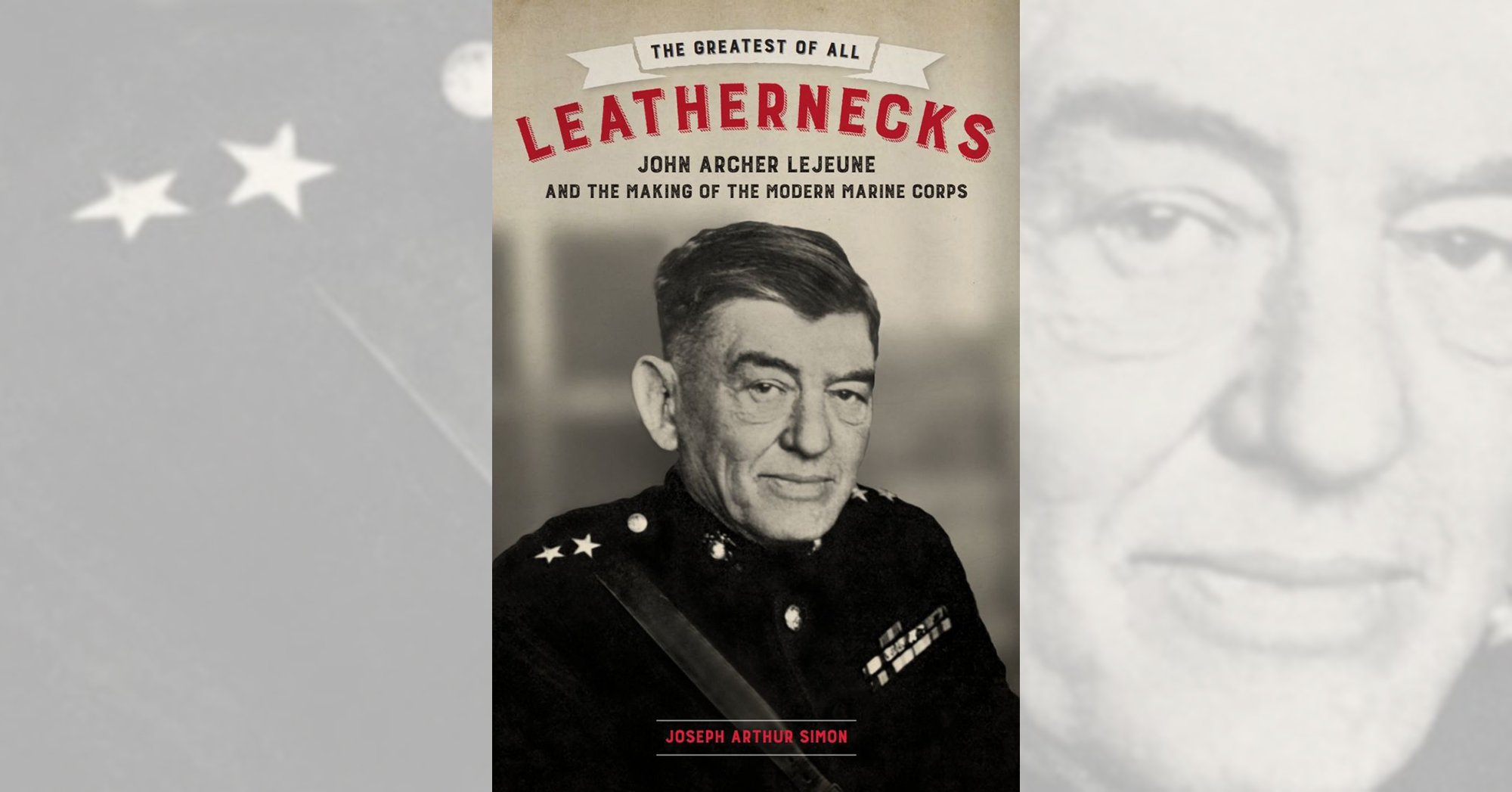The Greatest of All Leathernecks: John Archer Lejeune and the Making of the Modern Marine Corps, by Joseph Arthur Simon, Louisiana State University Press, Baton Rouge, 2019, $44.95
“Seems every time there’s a war, the men in my family join the Marines.” Forty years before actor John Agar (himself a World War II Army Air Corps veteran, albeit as a stateside phys-ed instructor) spoke that line in the classic 1950 war film Sands of Iwo Jima such a sentiment would have implied a tradition of service in a minor support branch of the Navy, one whose very existence was precarious. The Marines’ transformation into an elite force, and John Archer Lejeune’s pre-eminent role in it, is the story Joseph Arthur Simon relates in The Greatest of All Leathernecks.
When Lejeune was commissioned a second lieutenant in 1890, advances in technology and naval professionalism had rendered obsolete the Marines’ original functions—to enforce naval discipline and supplement the firepower of smoothbore artillery. Minor conflicts during Lejeune’s first 15 years of service allowed the Leathernecks to prove their value in amphibious assaults and the control of naval bases, while Lejeune himself demonstrated a level of professionalism that led to steady promotion and advanced studies at the Army War College. A stellar performance there assured his rapid rise to the top—command of the 4th Marine Brigade in the American Expeditionary Force during World War I, then of the U.S. Army’s 2nd Division, of which the brigade was a part.
Upon his 1920 appointment as its commandant Lejeune set about elevating the Marine Corps into a pillar of the U.S. armed forces. Training infantry to the highest standards and massively increasing advanced studies for officers was just the beginning. There were such new branches of warfare as aviation to be embraced. Incentives and benefits were introduced to attract high-caliber recruits into the enlisted ranks. And Lejeune determined that Marine Corps strategists would be the first in history to engage in thorough and ongoing scientific and operational studies of modern amphibious operations.
The Greatest of All Leathernecks is not, for the most part, the story of battles and campaigns. It is, rather, a fascinating, highly readable and very well-researched account of the training, planning and seemingly mundane matters that combined to produce one of the greatest fighting forces in history.
—James Baresel





